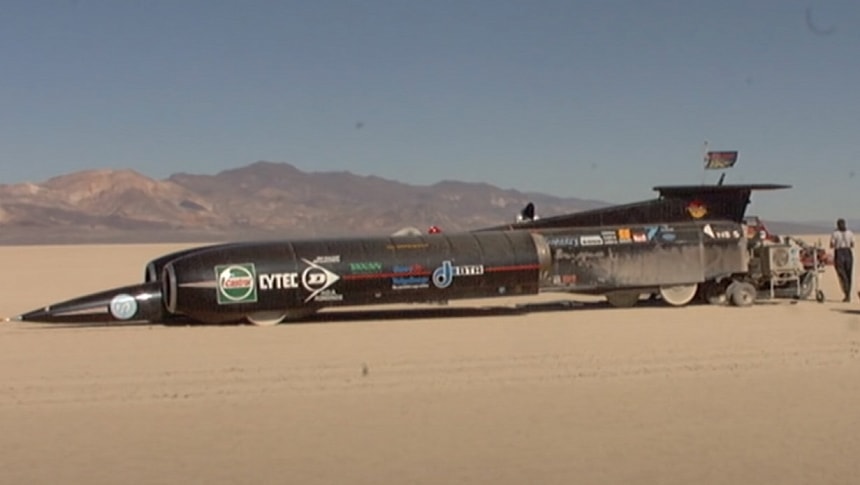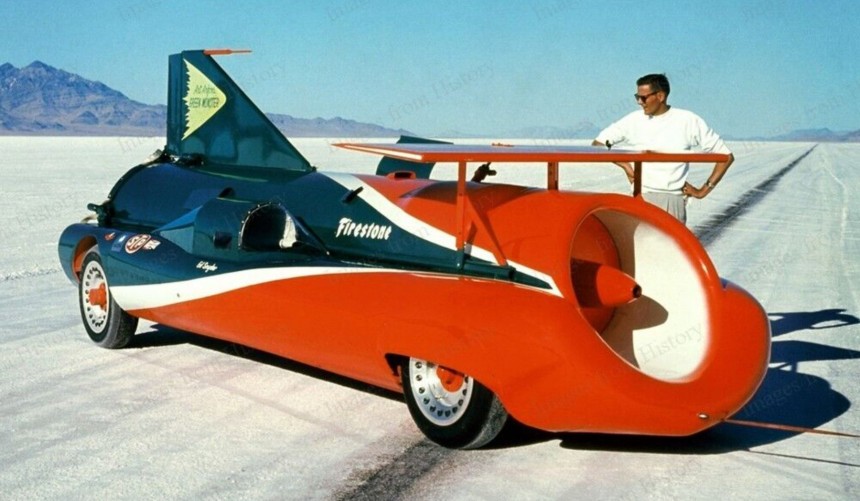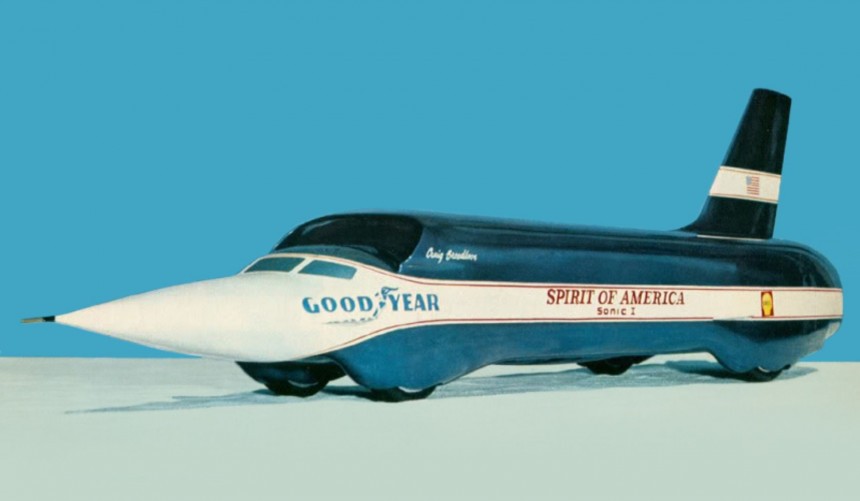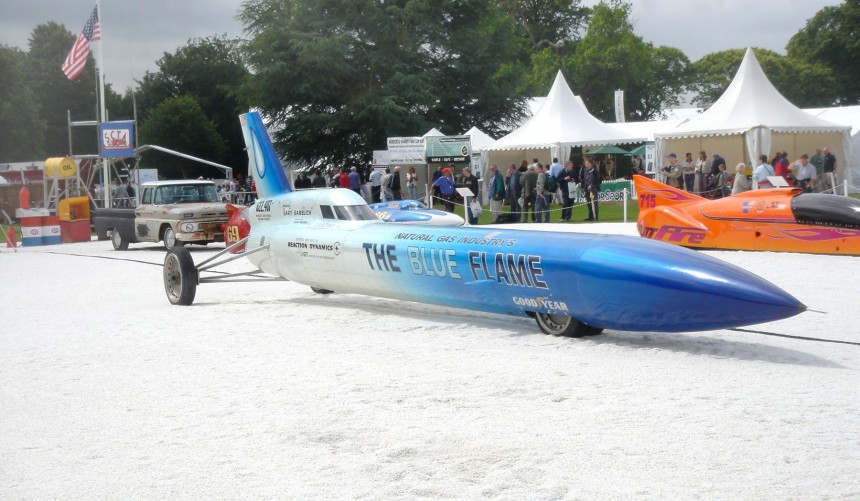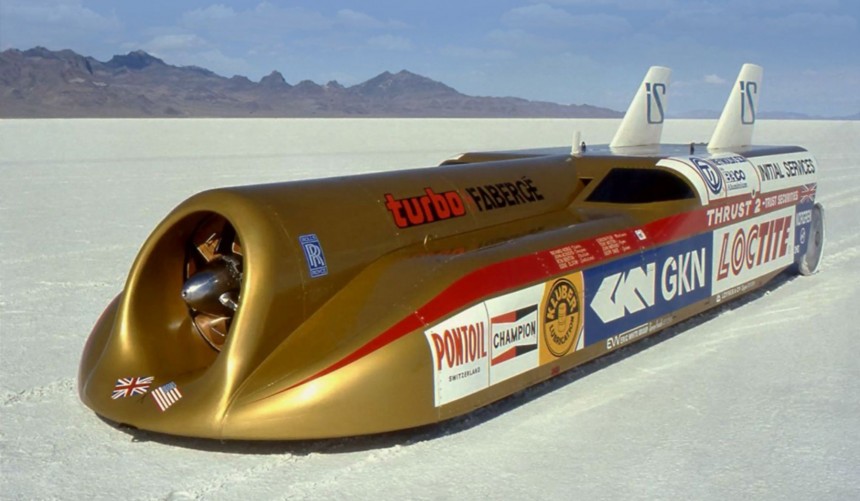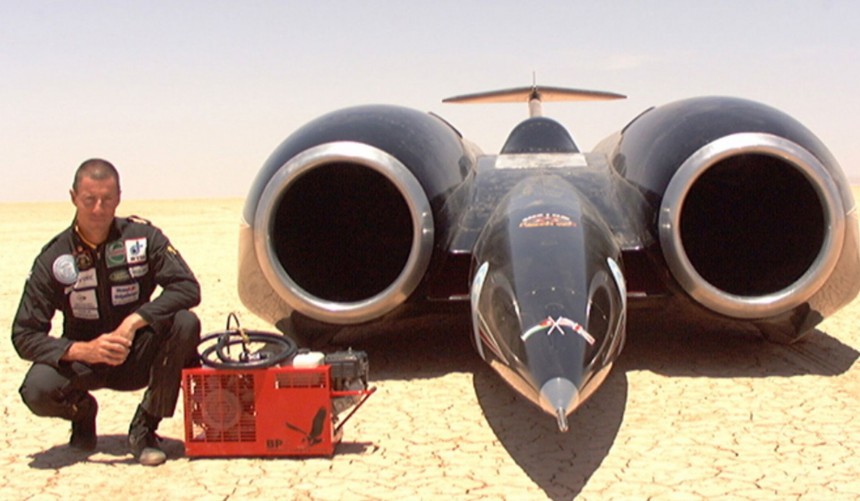While most people settled for vehicles that took them from point A to point B, a few thrill-seekers built these wingless planes on wheels that reached astonishing speeds.
Since the first automobiles emerged at the dawn of the 19th century, people have pushed the limits of speed to ever more insane levels.
This battle for speed resulted in organized land speed record attempts and governing bodies to ratify the records.
Since 1964, when an agreement between the Fédération Internationale de l'Automobile (FIA) and the Fédération Internationale de Motocyclisme (FIM) was reached, the absolute land speed record recognized whether the vehicle is a two-, three-, or four-wheeled machine.
To obtain a valid land speed record, a vehicle must complete two runs over a course measuring either 1 kilometer (0.62 miles) or 1 mile (1.6 km) within an hour, with the highest speed achieved in either of the runs qualifying for the record.
Over the last six decades, many vehicles have attempted to break the absolute land speed record, but only these five have succeeded.
The Green Monster moniker was used for several insanely fast vehicles built by drag racing legend Art Arfons and his half-brother Walt.
However, the most famous Green Monster was a land speed record-braking machine built by Art during the early 1960s.
The vehicle battled for land speed supremacy with Craig Breedlove's Spirit of America and Spirit of America - Sonic 1, as well as Walt's Wingfoot Express.
Although not always painted green, the Monster came on top several times, reaching its highest-ever speed of 576.553 mph (927.872 kph) in November 1965. While the record stood for only 10 days, the Green Monster is still the fifth fastest land vehicle ever built.
At the heart of the machine was a surplus F-104 Starfighter General Electric J79 jet engine with a four-stage afterburner that made 17,500 lbf (78 kN) of thrust.
Amazingly, Art Arfons sourced the engine from a scrap trader for $600. Although all service manuals were classified as "top secret" at the time, Art successfully rebuilt the engine in his backyard.
Craig Breedlove was another legendary speed addict who settled for nothing less than the absolute land speed record.
Along with a dedicated team of like-minded enthusiasts, he developed the General Electric (GE) J47 jet engine-powered Spirit of America, which ran for the first time in 1962.
The vehicle was successful but faced fierce competition from the machines built by the Arfons brothers, so in 1964, Breedlove and his team began building a new vehicle.
Completed about a year later, the Spirit of America - Sonic 1 featured an improved fuselage and a far more powerful GE J79 engine sourced from an F-4 Phantom II fighter-bomber - the same unit as the one used in the Green Monster.
The Sonic 1 battled it out with the Green Monster in November 1965 and managed to come out on top with a record speed of 600.601 mph (966.574 kph), a record that stood in place for the next five years.
By the late 1960s, Reaction Dynamics, a company founded by Pete Farnsworth, Ray Dausman, and Dick Keller, who had built the world's first hydrogen peroxide rocket dragster, set their sights on the absolute land speed record.
Based in Milwaukee, Wisconsin, the company spent the next years developing the Blue Flame, which, in October 1970, was driven by Gary Gabelich to a top speed of 630.478 mph (1014.656 kph).
The record-braking vehicle was based around a bespoke aluminum monocoque chassis covered by a fuselage built from the same material.
It was powered by a custom rocket engine that used a mixture of high-test peroxide and liquified natural gas (LNG), pressurized by helium gas to produce up to 22,500 lbf (100 kN) of thrust, the equivalent of 58,000 hp.
The record-braking vehicle is now on permanent display at the Auto und Technik Museum in Sinsheim, Germany.
After the Blue Flame's record was ratified, Scottish entrepreneur and aircraft enthusiast Richard Noble decided to put an end to American dominance of the record.
Noble established SSC Programme Limited, hired an all-star lineup and designers, including John Ackroyd, and began developing a test vehicle called Thrust1.
In 1977, Thrust1 completed its first run, and after it crashed in a subsequent test, the updated Thrust2 was built.
Though it was meant to be a second test vehicle utilized to develop a third, record-attempting machine, the Thrust2 was better than expected, and in October 1983, with Nobel himself at the helm, it set a new record with a top speed of 634.051 mph (1020.406 kph).
The Thrust2 was powered by a Rolls-Royce RB.146 (Avon302C) jet turbine engine rated at 16,186.24 lbf (72 kN ) of thrust, which corresponds to around 30,000 hp.
The record-breaking vehicle and its successor are currently on display at the Coventry Transport Museum in Coventry, England.
Richard Noble didn't settle for his 1977 record and decided to build another insane vehicle that would not only set a new land speed record but break the sound barrier in the process.
Dubbed Thrust SuperSonic Car (or Thrust SSC, for short), the vehicle was developed by a team that included engineering experts Glynne Bowsher, Ron Ayers, and Jeremy Bliss.
Unlike previous record-breaking vehicles, the Thrust SSC was powered by two jet engines. Both gargantuan units were Rolls-Royce Spey turbofans, which originally powered the British version of the F-4 Phantom II jet fighter. Together, the engines developed 50,000 lbf (223 kN) of thrust.
Even if he had the necessary experience to drive it, Noble decided that his latest beast needed to be driven by someone who was actually used to breaking the sound barrier, so he chose a Royal Air Force fighter pilot for the job: Wing Commander Andy Green.
After several attempts, which included a run that set a new record, Green finally managed to break the sound barrier in the SSC on October 15, 1997, achieving 763.035 mph (1227.986 kph).
Although there have been several attempts to break its record, the impressive Thrust SSC remains the fastest land vehicle ever created.
This battle for speed resulted in organized land speed record attempts and governing bodies to ratify the records.
Since 1964, when an agreement between the Fédération Internationale de l'Automobile (FIA) and the Fédération Internationale de Motocyclisme (FIM) was reached, the absolute land speed record recognized whether the vehicle is a two-, three-, or four-wheeled machine.
To obtain a valid land speed record, a vehicle must complete two runs over a course measuring either 1 kilometer (0.62 miles) or 1 mile (1.6 km) within an hour, with the highest speed achieved in either of the runs qualifying for the record.
Over the last six decades, many vehicles have attempted to break the absolute land speed record, but only these five have succeeded.
Green Monster
However, the most famous Green Monster was a land speed record-braking machine built by Art during the early 1960s.
The vehicle battled for land speed supremacy with Craig Breedlove's Spirit of America and Spirit of America - Sonic 1, as well as Walt's Wingfoot Express.
Although not always painted green, the Monster came on top several times, reaching its highest-ever speed of 576.553 mph (927.872 kph) in November 1965. While the record stood for only 10 days, the Green Monster is still the fifth fastest land vehicle ever built.
At the heart of the machine was a surplus F-104 Starfighter General Electric J79 jet engine with a four-stage afterburner that made 17,500 lbf (78 kN) of thrust.
Amazingly, Art Arfons sourced the engine from a scrap trader for $600. Although all service manuals were classified as "top secret" at the time, Art successfully rebuilt the engine in his backyard.
Spirit of America - Sonic 1
Along with a dedicated team of like-minded enthusiasts, he developed the General Electric (GE) J47 jet engine-powered Spirit of America, which ran for the first time in 1962.
The vehicle was successful but faced fierce competition from the machines built by the Arfons brothers, so in 1964, Breedlove and his team began building a new vehicle.
Completed about a year later, the Spirit of America - Sonic 1 featured an improved fuselage and a far more powerful GE J79 engine sourced from an F-4 Phantom II fighter-bomber - the same unit as the one used in the Green Monster.
The Sonic 1 battled it out with the Green Monster in November 1965 and managed to come out on top with a record speed of 600.601 mph (966.574 kph), a record that stood in place for the next five years.
Blue Flame
Based in Milwaukee, Wisconsin, the company spent the next years developing the Blue Flame, which, in October 1970, was driven by Gary Gabelich to a top speed of 630.478 mph (1014.656 kph).
The record-braking vehicle was based around a bespoke aluminum monocoque chassis covered by a fuselage built from the same material.
It was powered by a custom rocket engine that used a mixture of high-test peroxide and liquified natural gas (LNG), pressurized by helium gas to produce up to 22,500 lbf (100 kN) of thrust, the equivalent of 58,000 hp.
The record-braking vehicle is now on permanent display at the Auto und Technik Museum in Sinsheim, Germany.
Thrust2
Noble established SSC Programme Limited, hired an all-star lineup and designers, including John Ackroyd, and began developing a test vehicle called Thrust1.
In 1977, Thrust1 completed its first run, and after it crashed in a subsequent test, the updated Thrust2 was built.
Though it was meant to be a second test vehicle utilized to develop a third, record-attempting machine, the Thrust2 was better than expected, and in October 1983, with Nobel himself at the helm, it set a new record with a top speed of 634.051 mph (1020.406 kph).
The Thrust2 was powered by a Rolls-Royce RB.146 (Avon302C) jet turbine engine rated at 16,186.24 lbf (72 kN ) of thrust, which corresponds to around 30,000 hp.
The record-breaking vehicle and its successor are currently on display at the Coventry Transport Museum in Coventry, England.
Thrust SSC
Dubbed Thrust SuperSonic Car (or Thrust SSC, for short), the vehicle was developed by a team that included engineering experts Glynne Bowsher, Ron Ayers, and Jeremy Bliss.
Unlike previous record-breaking vehicles, the Thrust SSC was powered by two jet engines. Both gargantuan units were Rolls-Royce Spey turbofans, which originally powered the British version of the F-4 Phantom II jet fighter. Together, the engines developed 50,000 lbf (223 kN) of thrust.
Even if he had the necessary experience to drive it, Noble decided that his latest beast needed to be driven by someone who was actually used to breaking the sound barrier, so he chose a Royal Air Force fighter pilot for the job: Wing Commander Andy Green.
After several attempts, which included a run that set a new record, Green finally managed to break the sound barrier in the SSC on October 15, 1997, achieving 763.035 mph (1227.986 kph).
Although there have been several attempts to break its record, the impressive Thrust SSC remains the fastest land vehicle ever created.
